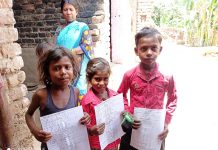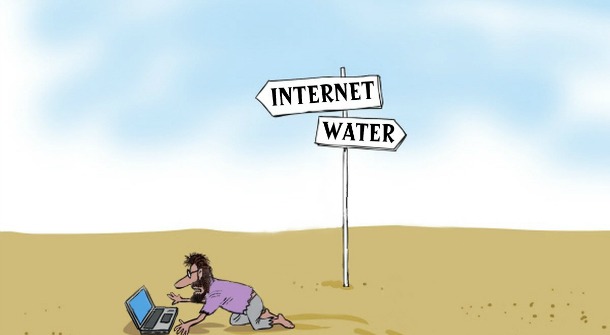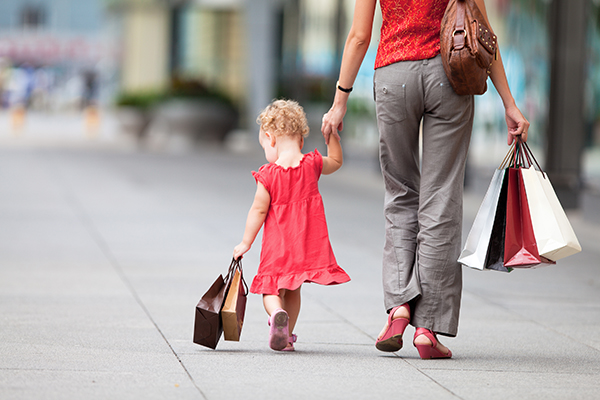In a world wracked by wildfires, deadly storms, and the now too-familiar drumbeat of dire climate warnings, statistical descriptions of the future humanity faces can seem at once too sterile and too overwhelming to process. What experiences lie in the as-yet-unrealized space between a world that is warming by 1.5° Celsius (2.7° Fahrenheit) and one that is becoming 3°C (5.4°F) hotter for a human being born today? The question is existential and urgent for younger generations, whose lives will be lived in that margin and for whom the answers may come in the form of more concrete questions: “Will there be enough food this year?” “Can I go outside today?” and “Will I have to migrate?”
A new study released this week in the journal Science aims to shed some light on what young people should expect, and the picture it paints is an ominous one. At the rate of warming that is projected to take place under current global carbon reduction pledges, a person born in 2020 will live through two to seven times more climate-related disasters than one born in 1960.
That includes twice as many wildfires, three times as many crop failures, and seven times as many heat waves. The study’s authors say their projections are conservative, and didn’t measure the severity of those events.
“We know very well scientifically that these extreme events are not only increasing in frequency, they’re also increasing in duration and intensity,” Wim Thiery, one of the study’s lead authors, told Mongabay in an interview. “This is not accounted for in the study. A heat wave in the future may not only occur more often, but also may last longer and be warmer than a heat wave today.”


Thiery and his co-authors used the output of climate models to project specialized impacts across regions to come up with their results. The frequency of extreme events like heat waves and river floods was based on the current slate of nationally determined contributions (NDCs), the emissions reduction pledges that each country submitted under the Paris Agreement. The study assumed that those NDCs would permit around 2.4°C (4.3°F) of warming by 2100, the conservative side of an estimate range that goes as high as 3.1°C (5.6°F). As children grow into a world where disasters occur more often, their consequences will become more unpredictable, Thiery warned.
“These things are connected, and they tend to occur together and amplify the impacts. This is a reason to believe our numbers may underestimate the actual burden on young people.”
While countries are currently in the process of updating their NDCs in the run-up to November’s COP26 climate conference, so far even the new pledges will put the world on a course that’s not far from the study’s findings, he added.
For children born last year, that means the world is setting a course that will lead to many times more extreme and deadly climate disasters. And at the regional scale, the burden of those disasters will fall primarily on children growing up in low-income countries that are already vulnerable and that have fewer resources to cope with the looming crisis.
The 65 million children born in Europe and Central Asia between 2015 and 2020, for example, would face around four times as many extreme events than those born there in 1960, whereas the 205 million children born in sub-Saharan Africa during the same period would experience six times as many.
A report issued by Save the Children in tandem with the Science study illustrates the extent to which regional disparities in climate impacts would be borne by children already living in difficult and insecure countries. Children born in Iraq in 2020 would face three times as many droughts and four times as many crop failures under current NDC pledges. Afghanistan was projected to have twice as many wildfires, and in Mali, children may live through a staggering 10 times as many crop failures as prior generations.
“The report is clear that there are impacts and increased risks for every child in the world, but the burden falls much harder on children in low and middle income countries,” Yoldande Wright, global director of child poverty, climate and urban at Save the Children told Mongabay.


The study and report comes as COP26 approaches, and a week after U.N. Secretary-General António Guterres urged U.N. member states to make more ambitious pledges, warning that the world is “on the edge of an abyss and moving in the wrong direction.” Promises by wealthy countries to set up a $100 billion-per-year climate fund to support low-income countries have yet to be fulfilled, and a U.N. analysis of current pledges suggests that emissions will be at least 16% higher in 2030 than they were in 2010 — far from the 45% reduction by 2030 needed to stave off the worst scenarios.
Thiery says that while he wants to raise the alarm over the future that policymakers are condemning children to, embedded in the study is a grain of hope and a path away from catastrophe. If countries mobilize more seriously and take stronger action to limit warming to 1.5°C, the number of extreme climate disasters young people face will drop sharply. Under that still achievable — yet increasingly distant — possibility, they would experience 45% fewer heat waves, 39% fewer droughts, and 28% fewer crop failures.
Lest those projections be lost in abstraction, for millions of infants in the world today that difference could define life trajectories and the scale of suffering they experience due to climate change. In the Middle East and North Africa, for example, children would see 40% fewer extreme events overall in a world that warmed by only 1.5°C as opposed to the much hotter planet that industrialized countries are currently setting a course toward.
“We have this unique opportunity to increase our ambition and not only give more pledges and promises, but to take action and start cutting our emissions today to get to 50% by 2030 and net zero by 2050,” Thiery said. “That is what our research is showing is absolutely necessary to safeguard the future of current young generations.”
Citation:
Thiery, W., Lange, S., Rogelj, J., Schleussner, C.-F., Gudmundsson, L., Seneviratne, S. I., … Wada, Y. (2021). Intergenerational inequities in exposure to climate extremes. Science, eabi7339. doi:10.1126/science.abi7339
Ashoka Mukpo is a staff writer for Mongabay and freelance journalist with expertise in international development policy, human rights, and environmental issues. His work has been featured in Al-Jazeera, Vice News, and The Guardian, among others.
This article is republished from The Mongabay under a Creative Commons license.













